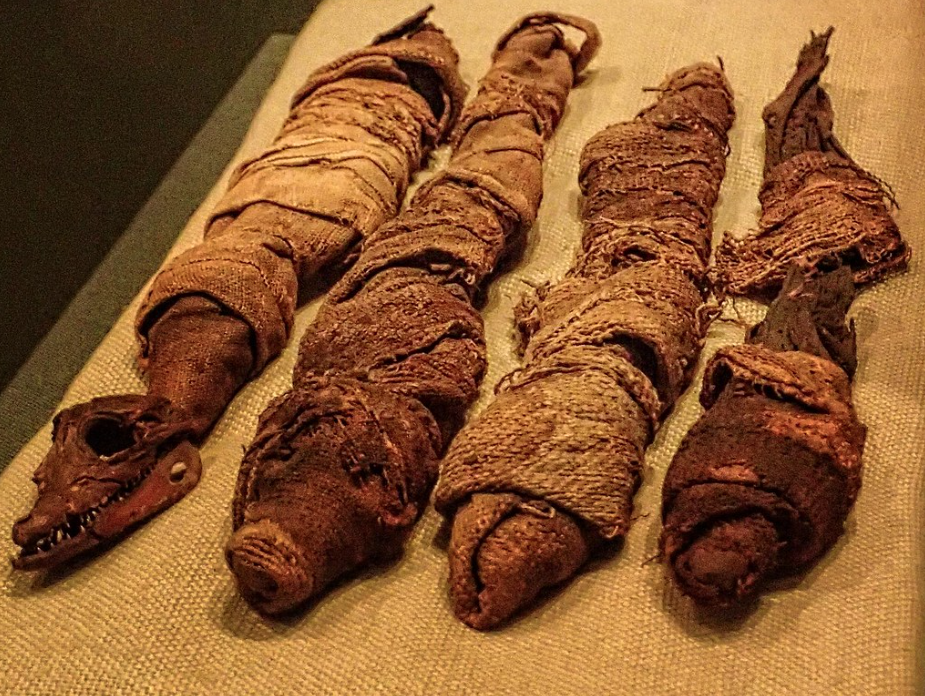Table of Contents
ToggleIntroduction to the Mummified Baby Crocodiles
At the National Museum of Natural History, part of the Smithsonian Institution in Washington, D.C., USA, four mummified baby crocodiles are on display. These invaluable artifacts date back to the Ptolemaic or Roman period of ancient Egypt, approximately 332 BCE to 250 CE.
These crocodile mummies are not just archaeological specimens but also crucial reflections of the religious and cultural life of ancient Egypt.
The Importance of Crocodiles in Egyptian Culture
Crocodiles in ancient Egyptian culture symbolized power, protection, and fertility and were closely associated with the god Sobek.
Sobek – The Crocodile God
Sobek was the god of water, fertility, and warrior strength. The Egyptians believed Sobek brought prosperity by regulating the Nile River—their primary lifeline. Thus, crocodiles, considered living manifestations of Sobek, were often mummified and offered as a form of reverence.
Why Were Crocodiles Mummified?
Crocodile mummies were not only offerings in temples but also seen as spiritual connections to seek protection and prosperity. Many such mummies were discovered in tombs or temple complexes dedicated to Sobek in cities like Crocodilopolis (modern-day Faiyum).

The Process of Mummifying Crocodiles
The ancient Egyptians developed sophisticated mummification techniques not only for humans but also for animals.
Key Steps in the Mummification Process
- Cleansing and Preparation: The crocodile’s internal organs were removed to prevent decomposition.
- Preservation with Natron Salt: This crucial step dehydrated the body and ensured long-term preservation.
- Wrapping in Linen: The crocodile was carefully wrapped in multiple layers of linen, sometimes adorned with religious symbols.
- Placement in Containers: Some mummies were placed in small coffins or ornately decorated jars.
Art and Spirituality Reflected in the Mummies
Many crocodile mummies, especially smaller specimens like the four on display at the Smithsonian, reveal the meticulous care and devotion of the Egyptians. Some even feature hieroglyphic inscriptions or motifs representing Sobek.
The Scientific and Cultural Value of Crocodile Mummies
Significant Archaeological Discoveries
These mummies not only provide insights into mummification techniques but also reveal the deep interaction between humans and animals in Egyptian religious practices.
Modern Technological Applications
Today, scientists use advanced tools such as CT scanning and DNA analysis to study the structure, health, and origins of these mummified crocodiles. Such studies unveil new insights into the environment and habits of crocodiles in ancient times.

The Fascination of the Smithsonian Exhibit
The four mummified baby crocodiles at the Smithsonian are a major highlight that draws numerous visitors. This exhibition not only showcases the mummies but also explains the historical, cultural, and scientific contexts, offering a comprehensive understanding of the role of animals in Egyptian spirituality.
Conclusion
The mummified baby crocodiles are vivid testimonies to the harmony between nature and spirituality in ancient Egyptian civilization. They exemplify the Egyptians’ intricate mummification techniques and reflect their profound connection to the divine. Museums like the Smithsonian not only preserve these treasures but also share their timeless values with a global audience.
